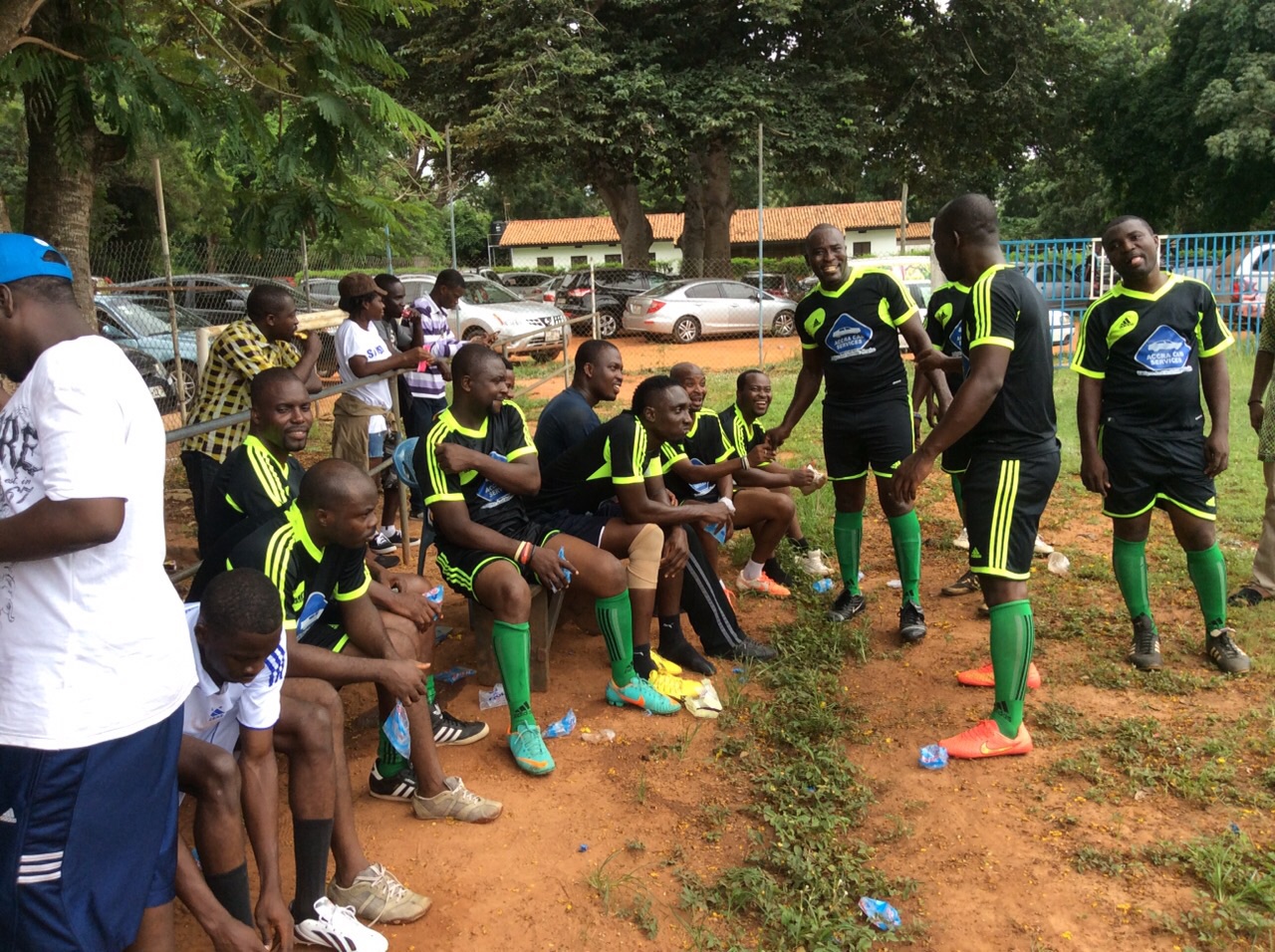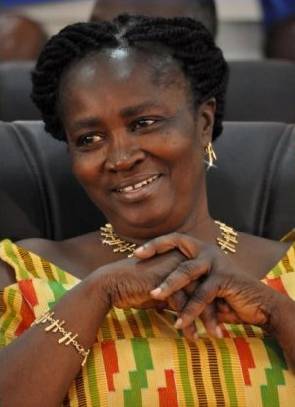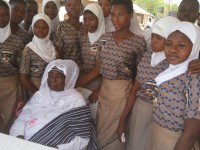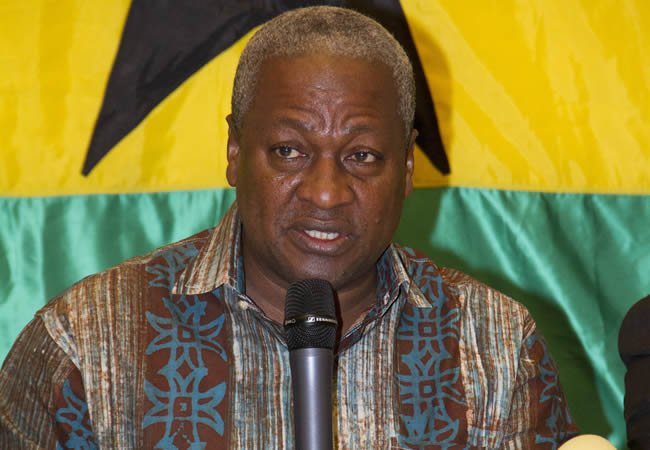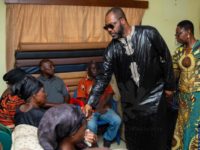 “Yee are the light of the world. A citie that is set on an hill cannot be hid. Neither doe men light a candle, and put it under a bushel: but on a candlestick, and it giveth light unto all that are in the house.” (Matthew 5:14, 15, King James Version, 1611 Edition)
“Yee are the light of the world. A citie that is set on an hill cannot be hid. Neither doe men light a candle, and put it under a bushel: but on a candlestick, and it giveth light unto all that are in the house.” (Matthew 5:14, 15, King James Version, 1611 Edition)
This piece is dedicated to the memory of Reverend Father Cornelius L. “Kodzo” Priems, who died on January 19, 2013, at the age of 92. He was headmaster of Bishop Herman College from 1952 – 1975.
August 1985. As the rays of the sun shot through the morning sky, the temperature of the earth rose by a few degrees. Slowly, shadows and silhouettes began to shorten, and by mid-day, they were barely visible. I had completed the fifteen-mile journey from Hohoe to Kpando to visit my future school. I was so excited about my visit, I barely noticed as the bus constantly swerved to avoid the avalanche of potholes that riddled the road between the two major towns. The decibel from the collective chatter in the bus was high, but I was too focused on my future – and academic prospects – to pay any attention.
I was entering Sixth Form at Biheco (an acronym for Bishop Herman College) the following month, and I felt it necessary to make a familiarization visit a few weeks before the start of the academic year. As the bus pulled to a stop in the center of town, I looked up the hills and saw the outline of the campus. It was an eerie feeling. This fortress of knowledge, built to sharpen the nation’s finest minds, stood on a hill – literally and metaphorically. Many great men before me had traversed the hallowed halls of this citadel of learning. I was joining the privileged few. A truly privileged few. As I began the steady climb towards the campus, I was horripilating…
Founded on February 28, 1952 by the then-Keta Diocese of the Roman Catholic Church, Bishop Herman College was named after the tireless and visionary Bishop Augustine Herman, who served as bishop of the aforementioned diocese from 1923 – 1945. The progenitor of the school’s motto – Sicut Miles Christi (its literal translation is: “As a soldier of Christ”) – Bishop Herman lived the life that he believed was needed to bring enlightenment and education to the region: as a soldier of Christ. The first headmaster of the school was Father Cornelius Priems, who passed away recently in Maastricht, Netherlands. Father Priems was affectionately called Kodzo, for he soon learned on arrival in Kpando that males born on Mondays in Eweland were called Kodzo, and he did not want to be any different.
When the Keta Diocese decided on the Aloryi Hills of Kpando as the ideal site for the school, those dignitaries were probably aware of the site’s spiritual significance: the apex of moral upbringing and academic pursuits. The site’s isolation from the Kpando Township has also served another important purpose: it constrains the would-be hothead or impulsive student to leave campus without permission, knowing that the absence of tall vegetation around the perimeter of the school made it easy to be spotted by instructors and, God forbid, the headmaster of the school. Swift punishment was usually meted out to students who flouted the rules.
Father Kodzo combined instructions in Latin with his duties as headmaster. In fact, Latin was a compulsory subject at Biheco in the 1960s – but it would become an elective by the early 1970s, with the subject completely phased out by the end of 1974. Unlike in most secondary schools in Ghana today, Father Kodzo made English Literature a compulsory subject: he wanted all students, including those who were studying science, to have superior English-language skills. It worked for many Bihecans.
Bishop Herman Boys’ College is, arguably, one of the nation’s best second-cycle institutions. In fact, Bishop Herman College was a top ten secondary school in Ghana from the 1960s through the mid-1980s, and I believe that its prestigious academic ranking – based on a smorgasbord of factors – remains intact in contemporary times. I have always argued that the top ten schools in Ghana – from the birth of the nation up to now – include Achimota Secondary School, Presbyterian Boys’ Secondary School, Bishop Herman College, Wesley Girls’ Secondary School, St. Peter’s Secondary School, Adisadel College, St. Augustine’s College, Prempeh College, Aburi Girls’ Secondary School, and Mfantsipim Secondary School. (Mfantsipim Secondary School, established in 1876 in the then-Gold Coast by the Methodist Church, holds the unique honor of being the country’s first secondary school.) Of course, I expect protestations over the legitimacy of this exclusive list!
A common variable among many of these top-performing schools, however, is their parochial origins – namely, their Catholic and Protestant backgrounds. Without a doubt, all over the world, parochial schools, particularly those founded by the Roman Catholic Church and the Presbyterian Church, have been at the forefront of education and academic instruction. In fact, governments almost always have had to play second fiddle to Christian missions in their attempts and efforts to educate the populace, which is why those of us who received our formal education in mission schools ought to be truly thankful. Although most of these mission schools were eventually absorbed into the Ghana Government’s educational structure and system, the missions were still allowed a strong voice in the administration of the schools, and Biheco, like some of the other schools, has maintained its “Catholicness” all these years. Indeed, students in these mission schools have remained the epitome of hard work, discipline, perseverance, and academic excellence.
Hard work was expected of both students and instructors in parochial schools, and poor academic work usually led to suspensions and, occasionally, dismissals. Students who otherwise were obstreperous in their previous schools received a rude awakening once they got admitted into these parochial schools. They soon realized that their once laissez-faire attitudes endangered their future academic accomplishments – and it was either they changed for the better or they faced the real prospect of poor academic work and its concomitant repercussions.
Getting admission to Sixth Form at Bishop Herman College under Father Priems, both for old students (those who had obtained their Ordinary Level certificates there) and new students, was, in the words of an ex-student, not an easy feat. Once a student who had achieved a perfect score at the Ordinary Level – seven grade ones! – was refused admission to Sixth Form at Biheco because Father Priems had considered him undisciplined. Achimota School took this lad without hesitation. Without a doubt, Father Kodzo would have found the level of ethnocentrism that Ghanaians now purvey on pro-Ghana(ian) Internet portals very disturbing. Although the great Biheco is located in Eweland, people of all ethnic backgrounds and religious persuasions have been admitted to the school over the years – as the primary criterion for enrollment has remained prior stellar academic work. Many “big men” around the country have been known to send their sons to Biheco, not only to obtain an education of the highest quality, but to learn some self-discipline as well.
Of course, there were notable on-campus shenanigans that I cannot refuse to share with the reader. In 1986, my favorite science tutor, who was caught in a romantic triangle, continually threatened to “knife” the man who was pitted against him for the affection of a particular damsel. A brilliant but troubled genius, this science instructor’s screams could be heard a quarter of a mile away each time his demons began to torment him: “I will knife him! I will knife him!” an apparent reference to his rival, whose identity his students never were able to ascertain. Sadly, these episodes continued until I graduated in June 1987.
We also had a stocky, chubby-cheeked science instructor from the Orient who had a violent temperament! Some students often joked that this East Asian instructor was, perhaps, mistakenly dropped on his head as an infant. Well, one time, some brave classmates of mine decided to embarrass this instructor. Knowing that the man had a hair-trigger temper, these students mocked him as he walked by the science laboratory. Pretending he did not hear the taunts, the instructor went around the building, out of the students’ view, only to emerge suddenly through a side door. His face flushing with rage by the minute, he verbally assaulted the students in his limited English before storming out of the laboratory. Even as the tutor walked away, there was a sudden roar of laughter behind him. The ridiculing was now complete. Surprisingly, the man did not return to confront his adolescent mockers. It was a day to remember!
As noble as Reverend Father Priems was, I never met him. When I entered Biheco in 1985, Reverend Father Joachim “Amakpa” Eleeza had been at the helm of the school for 10 years. A native of Jasikan, this white cassock-wearing headmaster was the embodiment of discipline! His stern demeanor was outmatched only by the length of the cane he almost always carried with him on his evening rounds – to punish those students who dared to stay behind in their dormitories instead of attending the mandatory evening studies, which were scheduled from 7:00 p.m. to 9:00 p.m. on weeknights. It may be no exaggeration on my part to state that, in my two years at Biheco, I never once saw Father Eleeza smile, and I was told that Father Kodzo never smiled either. It was, perhaps, one of their most effective methods of informal social control. (Okay, I could have explained this criminological theory in greater detail, but I do not want the piece to be too long.)
When Father Kodzo retired in 1975, the famous Kpando Borborbor ensemble composed and sang a song in his honor. Legend has it that all of the townspeople attended the event, for Father Kodzo had become a beloved “son” of Kpando! Oh, Borborbor, the pride of Eweland, that lovely music genre, with its staccato sounds created by castanets, followed by the rhythmic vibrations of the various drums – small and large – until the aggregation of the sounds reaches the nerve centers of the listener’s brain, producing a sort of algorithmic cadence that may confound even the biggest naysayers! On a side note, Ghana’s first elected president, Kwame Nkrumah, was a lover of Borborbor music, for Borborbor is no “spectator event.” The excitement that sweeps through the core of the listener and forces him or her to begin the very natural croons, gyrations, pantomimes and genuflections that such a unique music genre engenders is akin to the mesmerization that soccer lovers endure when they find themselves kicking out, albeit unintentionally, while watching two teams do battle on the field.
The first time that I saw my headmaster – Father Eleeza – smile was when I came for my Advanced Level certificate. His broad grin, pat on my back, and congratulatory message were, in all honesty, a pleasant surprise. It was, indeed, an epiphanic moment: he was a friendly man after all, but he understood that fraternizing with his students was not the best way to keep them focused on their books. Having now successfully completed my studies, Father “Amakpa” decided to showcase his pleasant side. I will never forget that interaction! Father Eleeza, in my mind, was a genius. Today, hobbled by symptoms of old age, Father Eleeza lives in retirement in his native Jasikan.
It is no surprise that Father Eleeza’s former students – thousands of them – have not forgotten the man who shaped, in one way or another, their destinies. Hordes of ex-students visit Father Eleeza regularly, which is an expression of their love for the old man. Seeing Father Eleeza’s weak, but beaming, smiles on Facebook.com – where most of the pictures of Father Eleeza, surrounded by adoring students, are posted by the indefatigable Amigosten Amoah, a fellow ex-Bihecan – brings tears to my eyes. Though poor in the flesh, Father Eleeza is rich in spirit. Though hobbled by old age, Father Eleeza’s spirit continues to soar – which is always evident in his interactions with his former students.
Like Bishop Augustine Herman before him, Reverend Father Cornelius Priems left indelible footprints in the sands of scholarship – specifically, in the hearts and lives of ex-Bihecans who went on to become notable physicians, college professors, administrators, scientists, politicians, policymakers, legislators, government ministers, priests, pastors, artistes, soldiers, and civil servants. Father Kodzo no longer runs Biheco, but his spirit lives on in the hearts and lives of his former students – and his spirit certainly lives on in Bishop Herman College. Today, our hearts are sorrowful because Father Priems, a giant of a man, has gone to his place of eternal rest. Old and current Bihecans must never forget the sacrifices of all the men who made Bishop Herman College what it is today. Father Priems came to serve, not to be served. Father Priems was selfless in his service to humanity as a soldier of Christ. Sicut Miles Christi.
